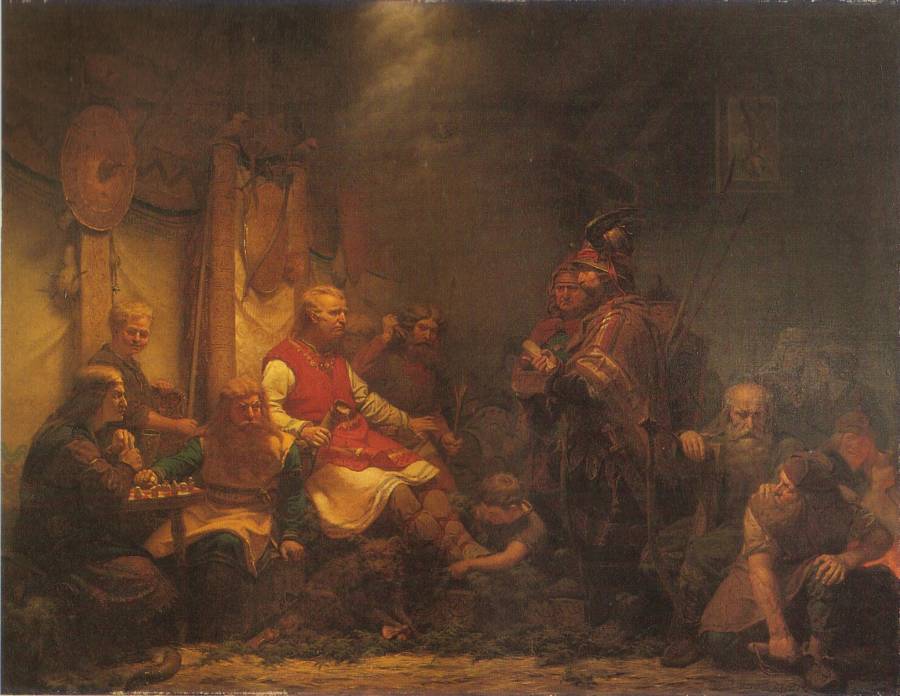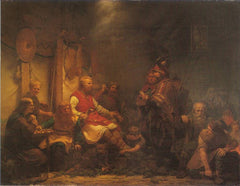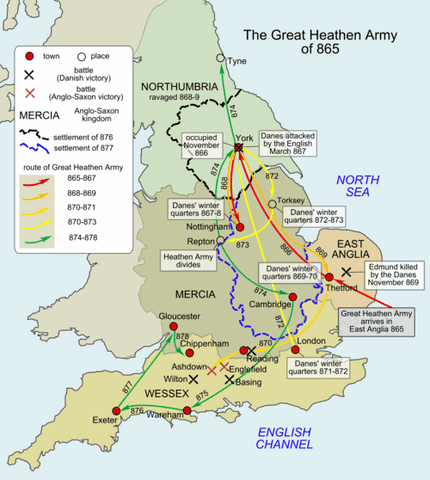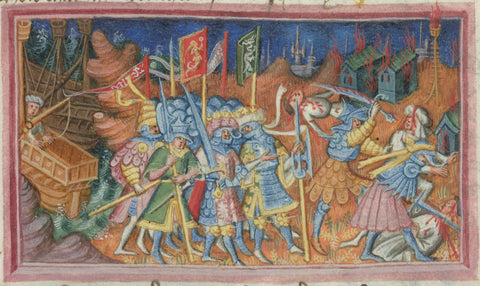on all orders over $100
on all orders over $100

Ivar Ragnarsson also known as 'Ivar the Boneless' was a viking chieftain who lead the infamous great heathen army in an invasion of medieval England during the 9th century AD.
If the Norse sources are to be believed then Ivar was completely devoid of bones, at least in his legs, and had to be carried into battle on a shield. In reality he was probably born with a medical condition which caused his bones to be extra brittle and prone to suffer from breakage such as Osteogenesis imperfecta.
In a time and culture where strength was respected above all and it was very much survival of the fittest, how was it possible for Ivar to become one of the greatest kings of the Viking age if he was born with such a disability? Part of the reason he wasn't discarded at birth was thought to be due to the fact that he was born to the legendary viking warrior, Ragnar Lothbrok. Ivar was also famed for his sharp mind and brilliant battle strategy, in the sagas he was often depicted as the leader amongst all of his brothers on their conquests, which is some statement since they were all notorious Viking warriors in their own right.
Ivar was the youngest child Ragnar and his third wife, Aslaug. He had five brothers, and had brothers including; Bjorn Ironside, Sigurd, Halfdan Ragnarsson, Ubba and Hvitserk. According to one saga the cause of Ivar's 'bonelessness' stemmed from the fact that his mother practiced a dark type of norse magic called seidr, Practitioners of which were known as völva.

Ivar's parents, Ragnar and Aslaug - Wilhelm Meyer
His mother had made a prediction that the child would be cursed unless Ragnar waited at least three nights before consummating their marriage. However since he had been away for weeks pillaging in the British Isles Ragnar paid little attention to her warnings. It was said to be due to this that Ivar was born with the condition that earned him the nickname 'boneless'.
The thing that separated Ivar from previous Viking invaders of the British Isles was that where they had come simply to raid an pillage, Ivar had come to conquer. He and his brothers, Bjorn, Halfdan and Ubba, invaded the British Isles in 865 at the head of what became known as 'the great heathen army'. This army had a distinct purpose; to avenge the loss of their father. Ragnar had been killed by the king of Northumbria when he was captured during an attempted raid. The legends stated that he was killed by being thrown into a pit of poisonous snakes by king Aella.

Ivar and his brothers learn how Ragnar died from King Aella's messenger - August Malmstrom
Up until this point the majority of Viking raids in the British Isles had been short lived hit and run attacks, however the great heathen army was the first full scale invasion force which was intended to conquer and occupy large areas of territory. The viking army encountered little resistance initially and managed to easily capture the important city of York in 866 AD, which was the capital of the kingdom of Northumbria at the time. King Aella and the former king Osbert were both captured in a final battle later in 867 AD, where the Vikings allegedly subjected him to a brutal and tortuous death in the form of the infamous 'blood eagle'.

Great heathen army - Hel-hama, CC BY-SA
After their conquest of the kingdom of Northumbria the Vikings marched down to Nottingham, after an initial retreat they returned south to defeat King Edmund in battle in East Anglia and eventually marched against the Kingdom of Wessex only to be defeated by Alfred the Great. Ivar was allegedly not present for these battles as he had taken some of the men and marched north to invade Scotland. Along with Olaf the White they invaded the kingdom of Strathclyde and sacked the capital city of Dumbarton in 870.

Ivar and Ubbe wreak havoc on the countryside - 15th century painting
Shortly after these events another Viking, by the name of Imhar, which was pronounced like Ivar, was wreaking havoc across Ireland. It is widely accepted by modern historians that this was also Ivar the boneless. Further evidence to support this theory comes from the fact that the kingdoms of York and Dublin became connected after this point, York was known to be Ivars seat of power in England. At this point Ivar was known as 'the king of all the Norsemen in Ireland and Britain'.
The exact date of Ivar's death is unknown, however estimates differ depending on which sources are to be believed. If the Ivar that was present in Ireland was in fact Ivar the boneless then the annals of Ulster put his death in the year 873 AD, three years after his escapades in Scotland. The death was attributed to a sudden and unknown disease, which could have been linked to the bone disease which he had suffered from for so long.
Another theory is that Ivar actually died in battle in England in 870 AD, this was stated by the Anglo-Saxon source, Æthelweard. A 17th century farmer later found a large Scandinavian burial mound on his land in Derbyshire. This was close to where the battle between the great heathen army and the kingdom of Mercia took place. The burial site included the graves of 250 other warriors surrounding the body, indicating that the person was of great importance and could in fact be the grave of Ivar.
According to the sagas Ivar had asked to be buried in a place that had been the site of a battle, he thought that this would prevent future invasions of the land and aid the norsemen in their victory.
If you enjoyed out article or have anything to add please leave a comment below.
Check out some of our Viking Swords.
Leave a comment